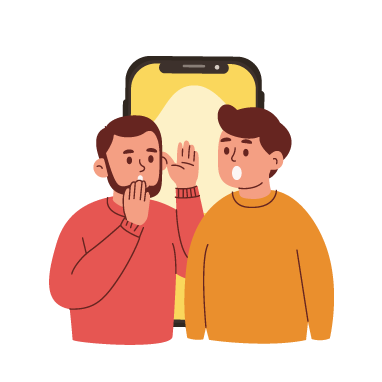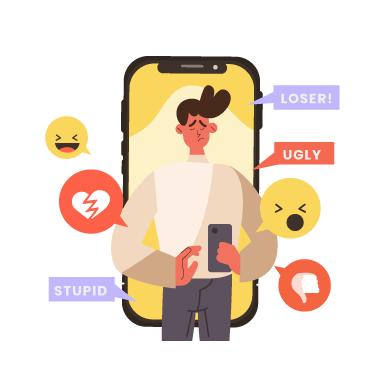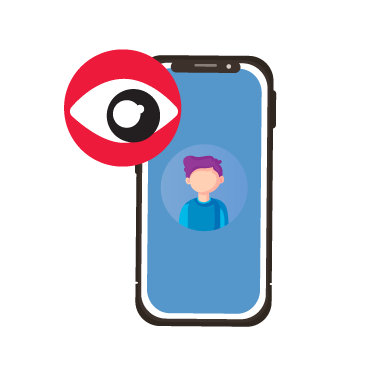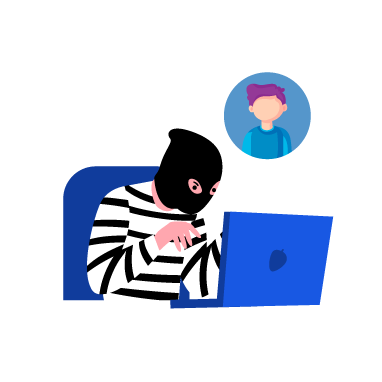A Guide to Online Safety for People with Autism
Introduction
In today’s digital world, people spend increasing amounts of time online. Social media platforms like Facebook, TikTok, Instagram, and Discord are excellent for making and maintaining friendships. For people with autism, these platforms provide opportunities to build relationships, learn new things, and explore interests. However, these benefits come with certain risks.
It’s crucial to understand how to protect privacy and engage in safe social interactions while using the internet and social media. This article provides tips and resources to help people with autism, including young people, stay safe online
Understanding Online Risks and Autism
People with autism face risks not only from others but also from developing compulsive online habits and internet addictions. They may also be more deeply affected by exposure to inappropriate content.
People with autism may be at higher risk for various online threats for several reasons:
- Difficulty navigating social cues: Missing signs of deception or manipulation.
- Overly trusting nature: Taking people at their word and not recognising deceit.
- Communication difficulties: Struggling to report issues or understand online interactions.
- Lack of advocacy skills: Not knowing how to seek help or stand up for themselves.
- Feelings of isolation: Seeking friendships online, increasing vulnerability to online grooming and manipulation.
Understanding these vulnerabilities is crucial in creating a safe online environment for autistic individuals. By recognising and addressing these specific challenges, we can better protect and support the autistic community in navigating the digital world
Dealing with Cyberbullying
Understanding Cyberbullying
Text-based communication can lack context, making it hard to judge intentions. However, abusive messages or attempts to intimidate or embarrass online are clear signs of cyberbullying.
The anonymity of being behind a screen often removes real-world consequences, encouraging bullies to target people outside their social circle or strangers.

Spreading gossip or rumours about you online

Humiliating posts and comments

Threatening you online
Types of Cyberbullying

Sharing your videos or photos without permission

Using your online profiles and information to stalk you

Hacking your social media accounts (also known as fraping)
6 Tips to Prevent Cyberbullying
Secure your social media accounts
Set your privacy settings to ‘friends only’ to prevent strangers from viewing your profile or sending messages. Some platforms such as Facebook also allow you to lock your profile
Protect personal information
Avoid posting your location, address, phone number, school, or workplace online to prevent cyberstalking and unwanted contact.
Ignore abusive messages
Don’t respond to bullies. Their goal is to get a reaction. Ignoring them can discourage further harassment
Report and block
Report bullying to the platform’s support team. They can review and possibly remove the content, and in serious cases, take action against the bully. Block the bully so that they cannot access your profile or contact you.
Seek support
Share what’s happening with a trusted friend or family member for support and advice.
Save the evidence
Take screenshots or save messages in case you need to make a police report.
Safe Online Interactions
Online interactions can be great for people with autism, but it’s important to stay safe. This section helps you recognise safe versus unsafe interactions, avoid catfishing, protect personal information, and navigate online dating safely.
Recognising Safe vs. Unsafe Interactions
Autistic individuals often make meaningful virtual friendships with people they’ve met in person or those they know only online. These relationships offer social interaction without the pressures of traditional social cues like eye contact and body language. It can be easier to find like-minded people online than in your local area, leading to long-lasting and positive relationships based on shared interests and experiences.
However, online anonymity can sometimes remove the “human element” of socialising, making it easy to unintentionally disregard others’ feelings. There’s also a risk that the person you’re talking to may not be who they claim to be and could have harmful intentions.
Safe Interactions
- Mutual Respect:
Both parties treat each other with kindness and consideration. There’s no pressure to share personal information, and both feel comfortable setting boundaries. - Clear Communication:
Conversations are clear and straightforward, without hidden meanings or manipulation. The other person is patient and understanding, especially if you need extra time to process or respond. - Supportive Behaviour:
The other person offers support without expecting anything in return. They are willing to help or offer advice but respect your decisions. - Appropriate Pace:
The relationship progresses at a comfortable pace, without rushing to meet in person or to deepen the relationship quickly. If you say you want to take things slow, the other person agrees without pressure. - Transparency:
The other person is honest about their identity and intentions. They share relevant information (not personal) about themselves but also respect your privacy
Unsafe Interactions
- Asking for Personal Information Too Soon: If someone you’ve just met online starts asking for personal details like your full name, address, phone number, or financial information, this is a RED flag. Safe individuals respect your privacy and don’t push for such details.
- Overly Friendly or Intense Quickly: Someone who becomes very friendly or emotionally intense too quickly might have hidden motives. This could include showering you with compliments, making promises, or expressing strong emotions after only knowing you briefly.
- Isolation Tactics: If someone tries to isolate you from your friends, family, or other online communities, be cautious. They might discourage you from talking to others about your interactions with them or make you feel guilty for not giving them enough attention.
- Inconsistent or Ambiguous Information: If the person gives inconsistent details about themselves or avoids answering questions about their identity or intentions, this could be a sign they are not being truthful.
- Pressure to Meet in Person: If someone insists on meeting in person before you’re ready or suggests secrecy around your meeting, this is a major RED flag. Safe individuals will respect your need to take things slow and involve others in decisions about meeting.
- Manipulative or Guilt-Inducing Behaviour: Be wary of someone manipulating your emotions, making you feel guilty for setting boundaries or saying “no.” They might say things like, “If you cared about me, you would share this,” or “You’re the only one who understands me.
Adapted from: Laugeson, EA (2017). PEERS® for young adults: Social skills training for adults with autism spectrum disorder and other social challenges. Routledge.
Sharing Personal Information
What is Personal Information?
Personal information includes details like your IC number, address, phone number, financial details, health status, and other sensitive data. Sharing this information online can be risky
Risks of Oversharing
Oversharing personal information online can lead to identity theft, financial fraud, or harassment. For example, posting your home address on social media could make you a target for scammers or unwanted visitors
Best Practices
- Limit sharing: Avoid sharing sensitive information like your full name, address, or financial details. Use only your first name or a nickname when interacting online.
- Use secure channels: When you need to share personal information, use secure and private channels, such as encrypted messaging apps, and ensure you’re sharing with a trusted individual.
- Review privacy settings: Regularly review and adjust your privacy settings on social media to control who can see your information.
Safe use of social media
Adjusting your privacy settings is crucial to controlling who can access your information.
Here’s how:
- Platform guides: Follow step-by-step guides to set privacy settings on popular platforms like Facebook, Instagram, and WhatsApp. This ensures only trusted individuals can view your personal details.
- Regular updates: Privacy settings should be regularly updated, as platforms often change their policies. Set reminders to review your settings every few months.
-
Interacting with others: When interacting online, it’s important to follow etiquette and be cautious:
- Be selective with friend requests: Only accept requests from people you’ve met in person or have a trusted connection with. Decline or block requests from strangers or suspicious accounts.
- Respect boundaries: Always check with someone before tagging them in a post or sharing their information. If someone doesn’t respond to your messages after a few attempts, give them space and wait for them to reach out.
- Avoid oversharing: Refrain from posting detailed personal information or discussing sensitive topics online.
-
Reporting and blocking: If you encounter unwanted or suspicious interactions, here’s what to do:
- Report inappropriate content: Most social media platforms have reporting tools to flag inappropriate content or harassment. Use these tools to alert the platform’s moderators.
- Block unwanted contacts: If someone makes you uncomfortable or behaves inappropriately, block them immediately to prevent further contact.
-
Meeting someone in person: If you decide to meet someone you’ve connected with online, follow these safety tips:
-
Choose a public place:
- Meet in a busy public location, such as a café or shopping centre.
- Choose daytime meetings where there are plenty of people around.
-
Inform a trusted person:
- Let a friend or family member know your plans, including who you’re meeting, where you’ll be, and when you expect to return.
- Consider having a friend accompany you or wait nearby.
-
Plan ahead:
- Decide on the details of your meeting in advance, including an exit plan if you start feeling uncomfortable.
- Trust your instincts and leave the meeting if something doesn’t feel right.
-
Choose a public place:
Exposure to Inappropriate Content
The internet is a great source of information, but it also has harmful content like violence, pornography, hate sites, and illegal material. Accidentally accessing such content can cause feelings of shame, guilt, confusion, or even excitement.
Understanding the risks
- Distress or confusion: Certain content can be difficult to understand and may cause feelings of fear or guilt.
- Copy-cat behaviour: Autistic individuals might imitate inappropriate content if they do not fully grasp its context or consequences.
- Legal issues: Accessing or sharing illegal content, even accidentally, can have serious legal repercussions.
Tools and strategies to block inappropriate content
- SafeSearch: Google’s SafeSearch filters out explicit content from search results. Enable this feature on all devices.
- Ad and pop-up blockers: Install ad and pop-up blockers on your browser to prevent unexpected exposure to explicit content.
- Antivirus and anti-malware protection: Keep your antivirus software up-to-date to protect against pop-ups and explicit content caused by malware.
- Content filters: Use content filtering tools like Net Nanny or Norton Family, which are popular in Malaysia, to block access to harmful websites.
- Social media controls: Many platforms, including Facebook and YouTube, offer content control settings that allow you to manage the type of content visible on your feeds.
You can report any inappropriate, explicit or illegal content to the Malaysian Communications and Multimedia Commission (MCMC)
General Tips for Staying Safe Online
PLAY IT SAFE: An acronym for staying safe online and being aware of potential threats. Here’s a summary of key tips, integrated with the PLAY IT SAFE acronym to reinforce learning:

Personal information: Never share your personal information online, such as your IC number, address, or financial details.

Let a friend or family member know: Inform someone you trust if you feel unsafe or if someone asks for sensitive information

Attachments: Be cautious of email attachments, which may contain malware. Only open attachments from trusted sources.

Your feelings matter: If something makes you feel uncomfortable or unsafe, stop and let somebody know.

Information: Remember that not everything you read online is true. Verify sources before believing or sharing information.

Take breaks: Step away from your computer regularly to socialise, stretch, and give your eyes a rest.

Spend money wisely: Avoid purchasing from unfamiliar online stores or sending money to people you don’t know well

Act politely: Maintain the same standards of behaviour online as you would in real life.

Friends online should stay online: Be cautious about meeting online friends in person. Always follow safety protocols.

Enjoy yourself and have fun: The online world offers many positive experiences. Stay safe to make the most of it.
Conclusion
The digital world offers amazing opportunities for people with autism to make friends, learn new things, and explore interests. However, it’s important to stay safe online. Technology itself isn’t inherently good or bad; it’s how we use it that matters. By being mindful of what we view, how often we engage, and our intentions, we can enjoy the benefits of technology without letting it replace real-life experiences and human connections.
To make your online experience enjoyable and secure, understand the challenges and take steps to protect yourself. Stay informed, set boundaries, and ask for help when needed. Remember to spend time offline every day to exercise, get fresh air, and relax. Enjoy all the great things the online world has to offer, safely!
Resources and Further Reading
- Amar-Singh HSS (2021). Cybersafety: Keeping Children and Teenagers Safe Online. Guidebook for Teachers and Parents. Women’s Centre for Change. Available at: Women’s Centre for Change
- Laugeson, EA (2017). PEERS® for young adults: Social skills training for adults with autism spectrum disorder and other social challenges. Routledge.
- Southwest Autism Research and Resource Centre (SARRC). Online Safety for Teens and Adults with ASD.
- PsychCentral. Using Social Media on the Autism Spectrum

